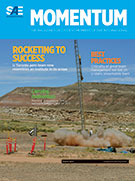Technical Paper
A Zero Trust Architecture for Automotive Networks
2024-04-09
2024-01-2793
Since the early 1990’s, commercial vehicles have suffered from repeated vulnerability exploitations that resulted in a need for improved automotive cybersecurity. This paper outlines the strategies and challenges of implementing an automotive Zero Trust Architecture (ZTA) to secure intra-vehicle networks. ...This research successfully met the four requirements and demonstrated that using ZT principles in an on-vehicle network greatly improved the cybersecurity posture with manageable impact to system performance and deployment.








